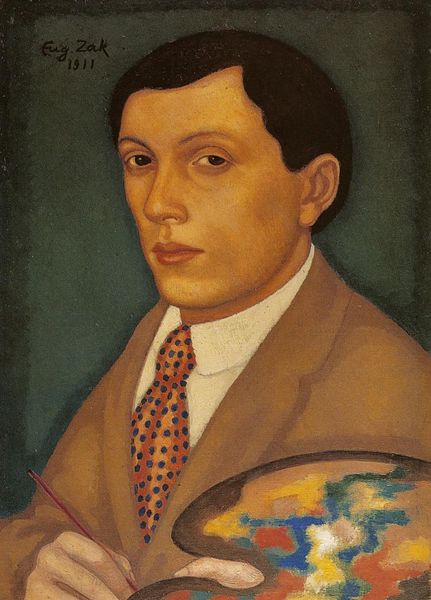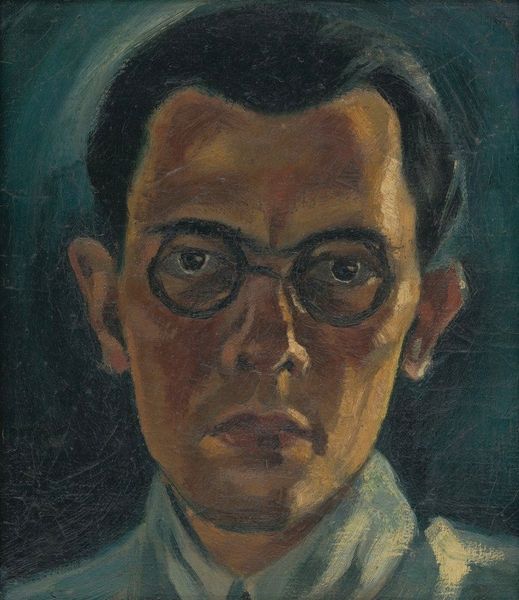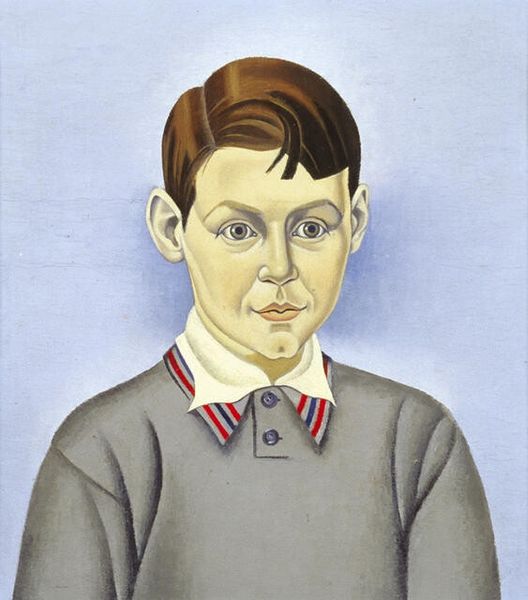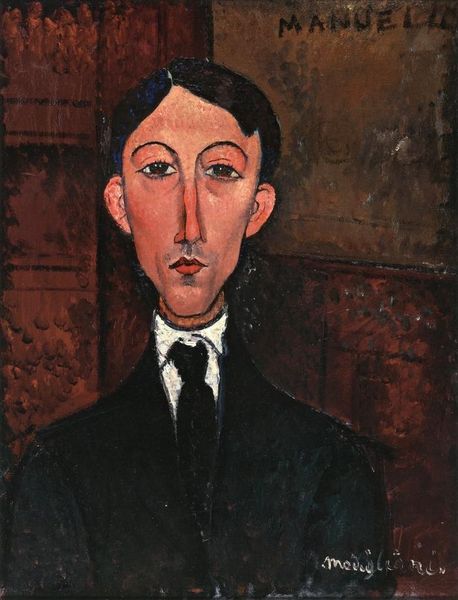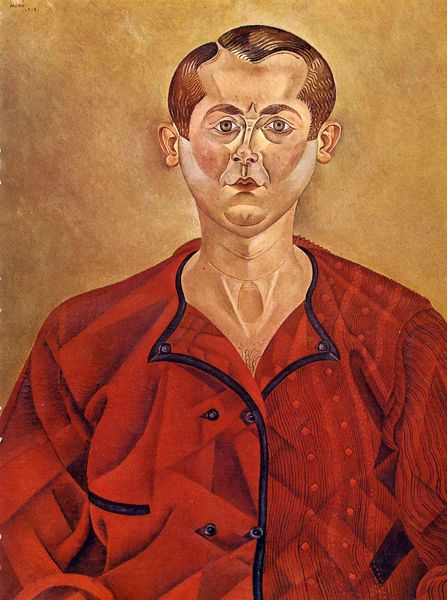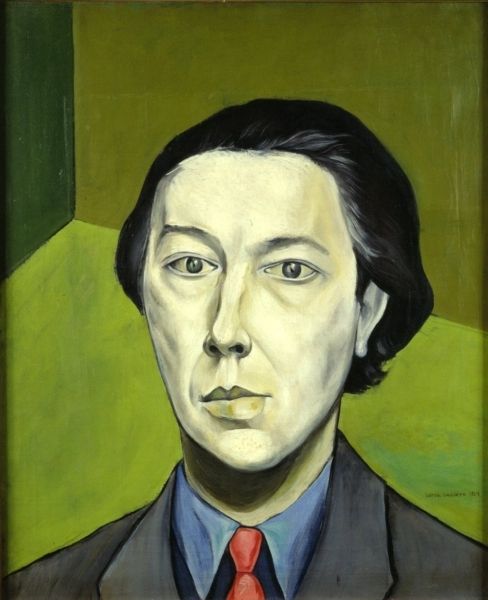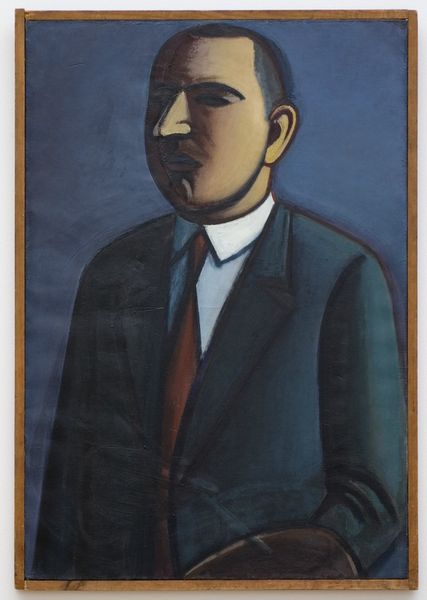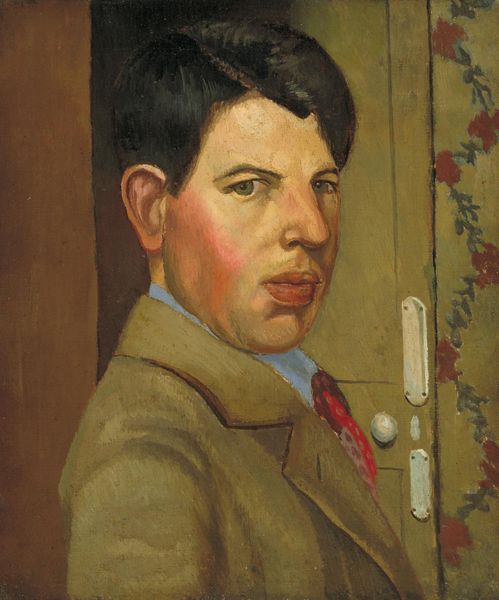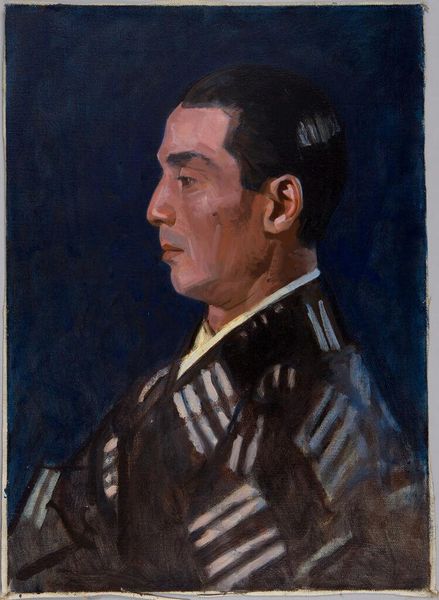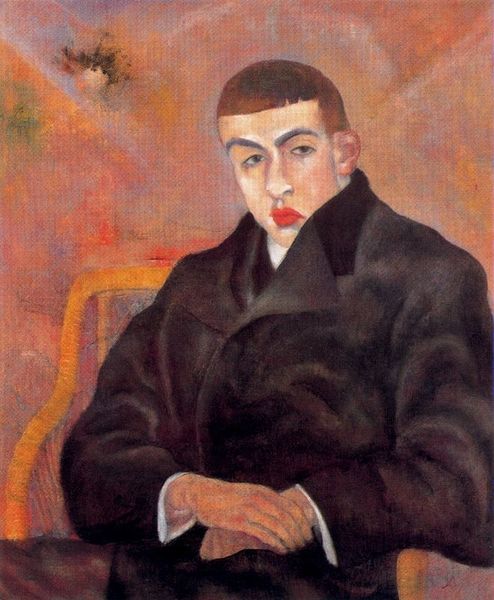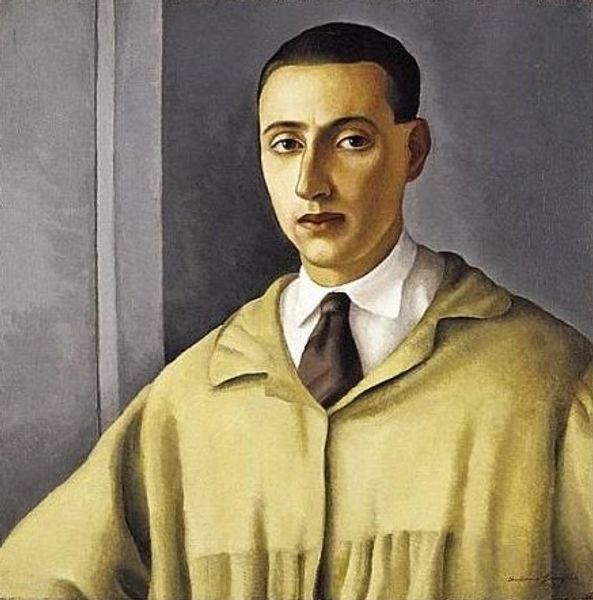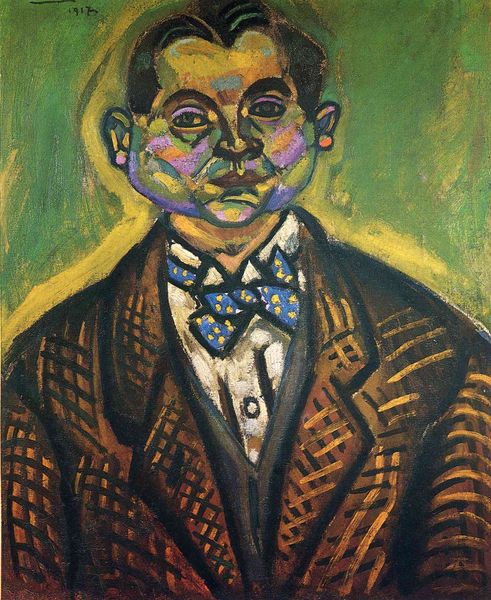
painting, oil-paint
#
portrait
#
painting
#
oil-paint
#
geometric
#
modernism
#
realism
Copyright: Rita Angus,Fair Use
Editor: This is Rita Angus’s “Head of a Maori Boy”, an oil painting from 1938. There's something so striking about the boy’s direct gaze and the almost geometric way his features are rendered. What do you make of it? Curator: It's a powerful piece, especially when considered within the historical context. In the 1930s, Māori culture was often romanticized or exoticized by Pākehā – New Zealanders of European descent. Angus’s work, while seemingly a straightforward portrait, participates in a complex dialogue about representation and cultural identity. Editor: How so? It seems pretty simple at first glance. Curator: Look at the stylized features – the almost flattened planes of his face. This could be read as a modernist simplification, or we might interpret it as an attempt to connect with and represent Māori identity differently. It steers away from sentimental or picturesque depictions of Māori that were popular at the time. What do you think about the light? Editor: It's quite stark, isn't it? Almost theatrical. It creates strong shadows. Curator: Precisely. And think about the politics of looking – who is doing the looking, and at whom? The artist, a Pākehā woman, is portraying a young Māori boy. This brings up questions about the power dynamics inherent in portraiture and the responsibility of the artist in representing a culture that is not their own. We need to ask whose voice is amplified, and whose is being mediated. Editor: That makes me consider her position as a female artist too, challenging norms. The boy almost looks androgynous. Curator: Absolutely. By deconstructing traditional representations and highlighting these nuances, Angus’s portrait becomes a statement about visibility, identity, and the ongoing negotiation between cultures. Editor: It makes you look beyond the surface, beyond the subject. I had never thought of portraiture in those intersectional terms before.
Comments
No comments
Be the first to comment and join the conversation on the ultimate creative platform.
